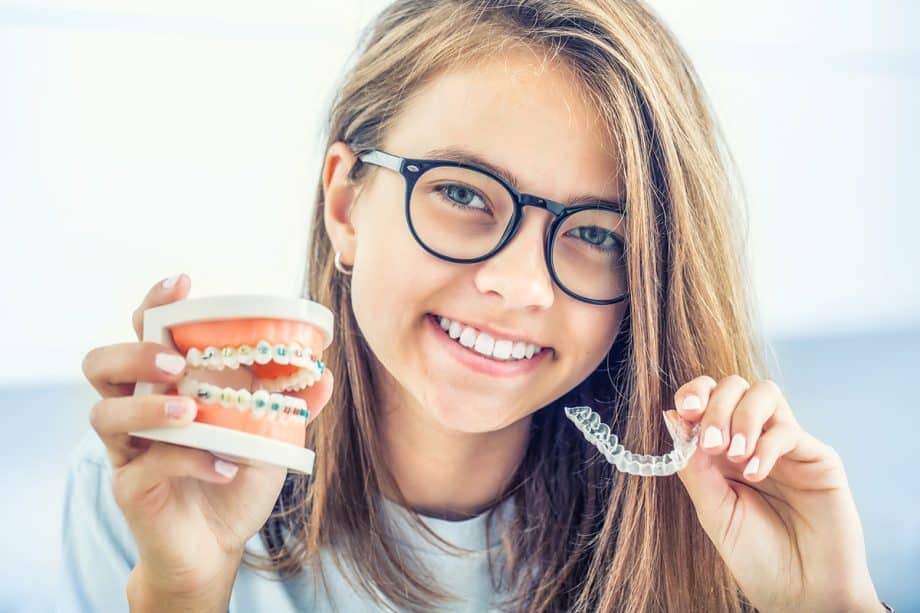When your child is ready to begin orthodontic treatment to correct misaligned teeth or a problem with their bite, your orthodontist may inform you that you have the option to choose between braces or Invisalign. Here is what to know about Invisalign vs. braces.
Conditions Treated
Both Invisalign and braces with metal or clear brackets can fix common conditions including:
- Crooked teeth
- Crowded teeth
- Unevenly spaced teeth
- Slanted teeth
- Mild to moderate bite issues
Severe bite issues such as an overbite, underbite, crossbite, or open bite may respond faster to treatment with traditional metal braces. If this is the case, your orthodontist will let you know.
Cost of Invisalign vs. Braces
Invisalign is typically more expensive than metal braces. However, if you have dental insurance that offers orthodontic treatment, insurance is likely to pay for a portion of either Invisalign or braces. If you do not have dental insurance, financing options or discounts may be available to help you afford orthodontic treatment. Some patients who have Health Savings Accounts may also be able to use those funds for orthodontic treatment.
Length of Treatment
Some patients will find that treatment with Invisalign is shorter than treatment with traditional braces. However, orthodontic acceleration devices such as the Propel system can expedite treatment with either braces or Invisalign. So no matter which option you choose, the option to speed up treatment is likely available.
Comfort
The smooth, BPA-free plastic used to make your child’s Invisalign trays results in less abrasion on the inside of the cheeks and gums. Teens and adults have been wearing bracket braces for decades, so they are not painful, but they take some getting used to. There is also no risk of a wire snapping and causing an abrasion with alignment trays.
Appearance
Invisalign is certainly a more discreet option for aligning teeth. With proper care, the alignment trays are nearly invisible when worn. However, braces are also available with clear brackets or on the inside of the teeth if you are looking for an aesthetic option that is not removable.
Oral Care
Invisalign has a clear advantage when it comes to caring for the overall health of the teeth. Because the alignment trays are removable the entire surface of the teeth can be brushed normally. Flossing is also made easier with Invisalign. That doesn’t mean you cannot floss with braces. Using special tools such as a floss threader or a water flosser will allow you to maintain good oral care.
Removable vs. Fixed Treatment
Braces work 24 hours a day, whereas Invisalign only works if your child wears them. Invisalign needs to be worn 20-22 hours a day to be effective in the prescribed treatment time. If your child will not be responsible for wearing them as instructed, traditional braces may be a better choice for their lifestyle.
Food Choices
Invisalign has an advantage when it comes to kids and teens being able to eat whatever they want (brushing after of course). Because the alignment trays are removed before eating, kids don’t need to worry about food getting stuck in their braces, breaking a bracket, or dislodging a wire.
Orthodontic Treatment with Invisalign or Braces in Maplewood
Deciding whether to opt for Invisalign vs. braces is often a personal choice for parents and their children. At Marigold Pediatric Dentistry & Orthodontics, we present parents with all options for orthodontic treatment, based on the current tooth alignment, bite, and structure of the jaw. We will outline the benefits of each treatment option, including how each option will fit your individual lifestyle needs. To schedule an orthodontic consultation today, contact us today at 973-821-7161 or request an appointment online.


